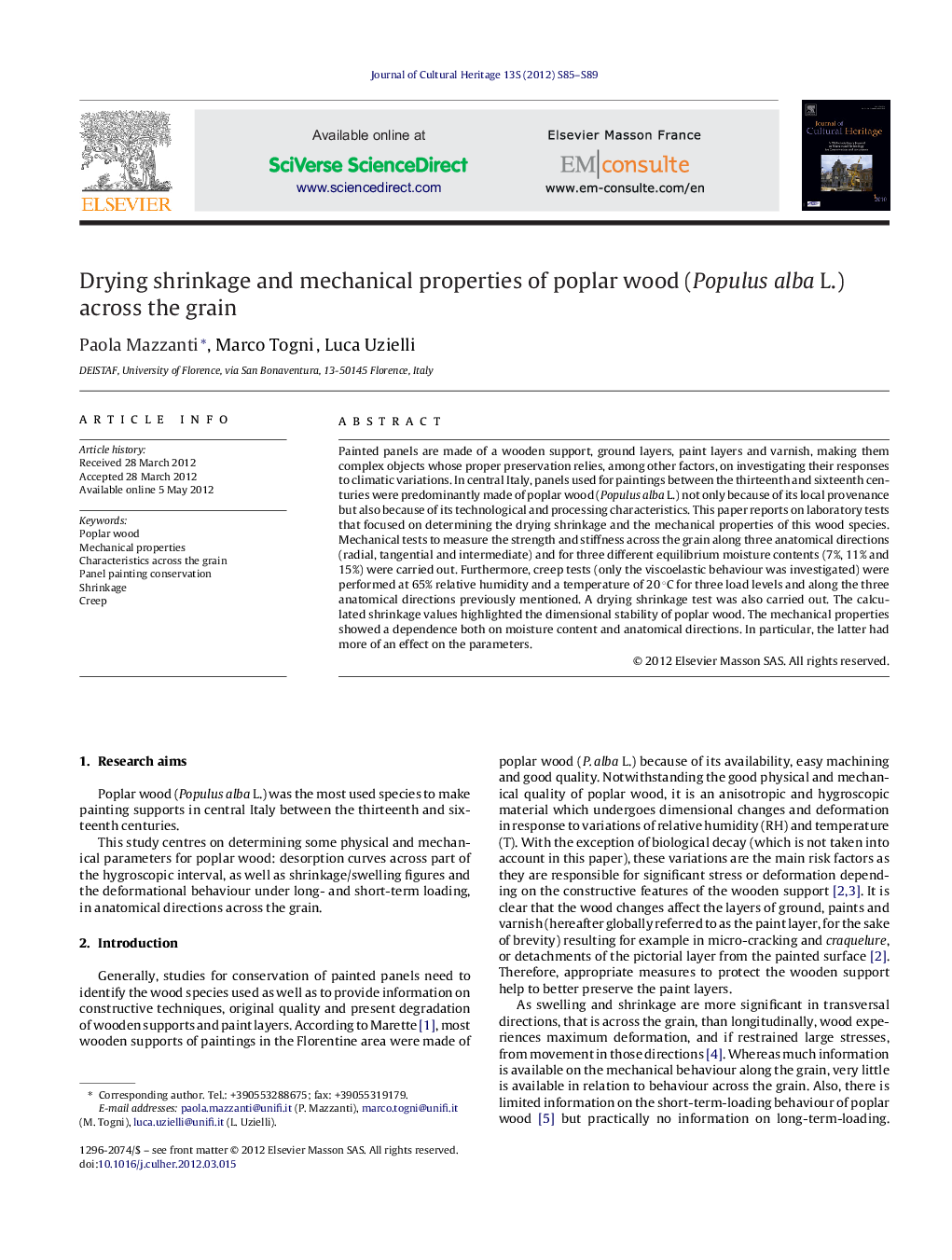| Article ID | Journal | Published Year | Pages | File Type |
|---|---|---|---|---|
| 1038241 | Journal of Cultural Heritage | 2012 | 5 Pages |
Painted panels are made of a wooden support, ground layers, paint layers and varnish, making them complex objects whose proper preservation relies, among other factors, on investigating their responses to climatic variations. In central Italy, panels used for paintings between the thirteenth and sixteenth centuries were predominantly made of poplar wood (Populus alba L.) not only because of its local provenance but also because of its technological and processing characteristics. This paper reports on laboratory tests that focused on determining the drying shrinkage and the mechanical properties of this wood species. Mechanical tests to measure the strength and stiffness across the grain along three anatomical directions (radial, tangential and intermediate) and for three different equilibrium moisture contents (7%, 11% and 15%) were carried out. Furthermore, creep tests (only the viscoelastic behaviour was investigated) were performed at 65% relative humidity and a temperature of 20 °C for three load levels and along the three anatomical directions previously mentioned. A drying shrinkage test was also carried out. The calculated shrinkage values highlighted the dimensional stability of poplar wood. The mechanical properties showed a dependence both on moisture content and anatomical directions. In particular, the latter had more of an effect on the parameters.
